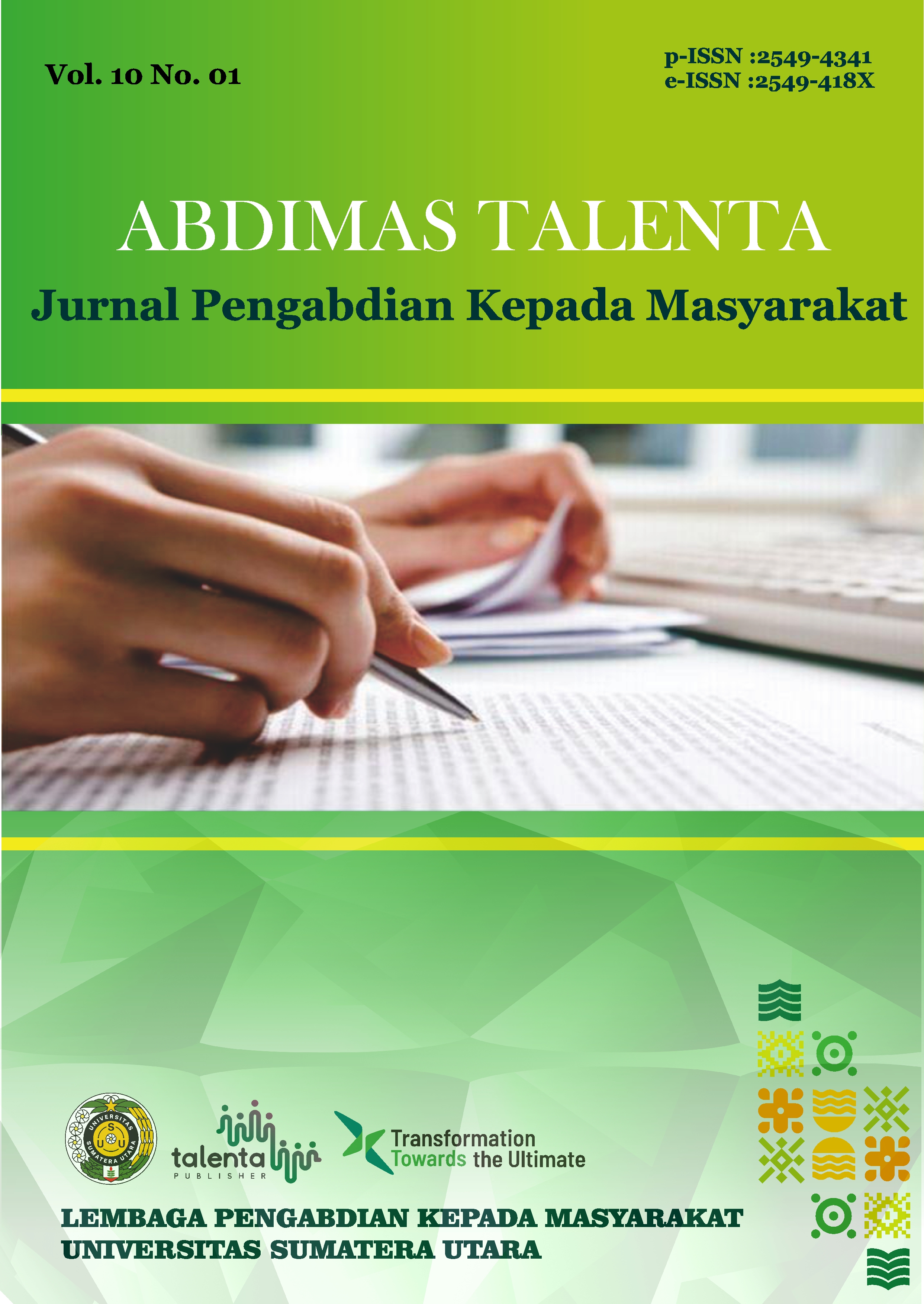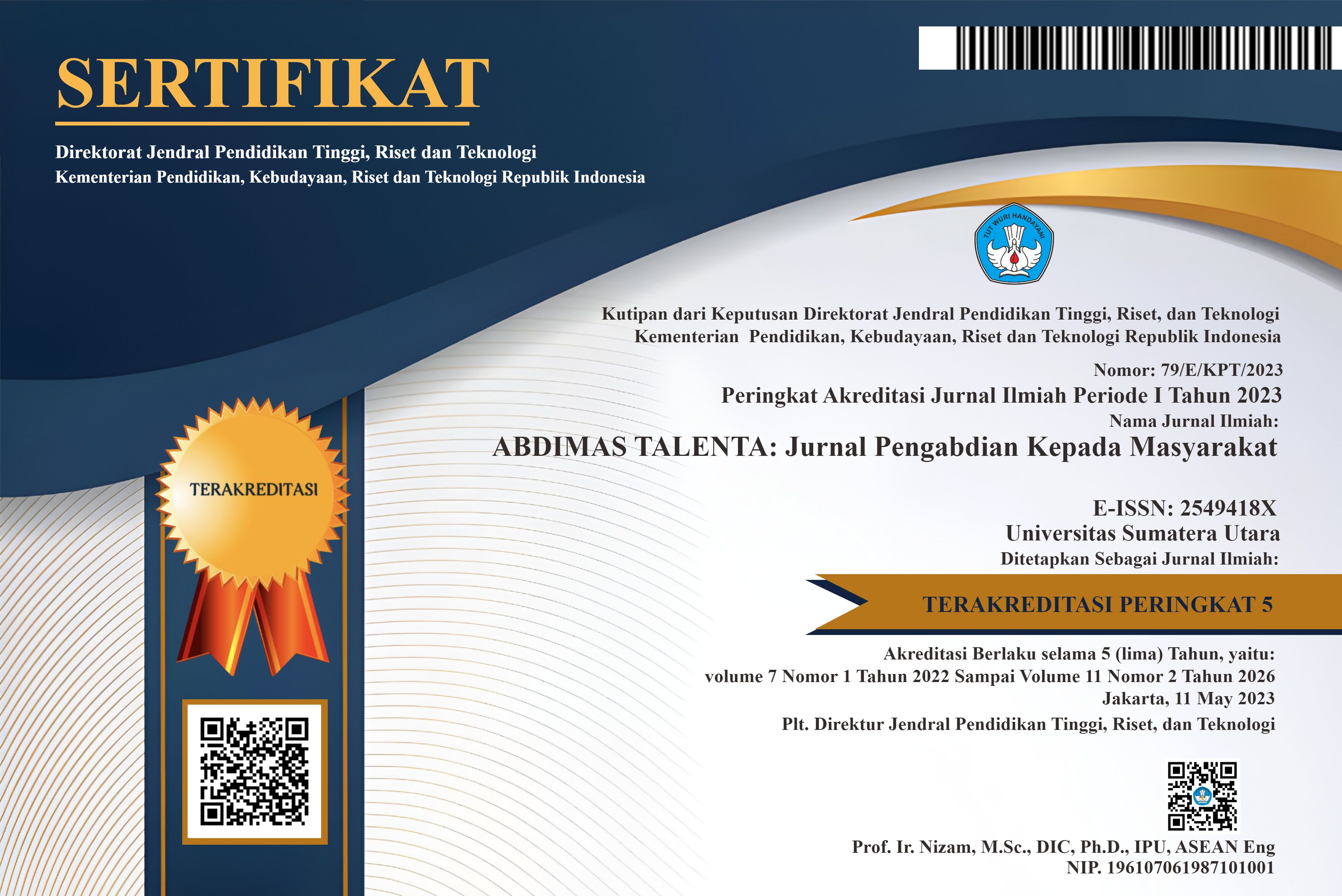ASTACITA as a Pentahelix Collaboration Model in Building Independent Tourism Villages: A Case Study of Kuta Gugung
DOI:
https://doi.org/10.32734/abdimastalenta.v10i1.22037Keywords:
ASTACITA, pentahelix collaboration, rural tourism, participatory development, villageAbstract
This article explores the ASTACITA Summit 2025 as an initial model of pentahelix-based collaboration for rural development, focusing on the tourism village of Kuta Gugung in North Sumatra, Indonesia. The summit was conceived as a strategic platform to foster long-term partnerships among five key actors’ government, academia, business, community, and media to empower rural communities in a participatory and sustainable manner. Unlike conventional aid-based programs, ASTACITA emphasizes knowledge transfer, network-building, and multi-sector synergy to promote self-reliance. Using a qualitative descriptive method with a case study approach, data were collected through participant observation, informal interviews, and documentation of summit activities. Results show that ASTACITA effectively enabled cross-sector dialogue, identified community needs and potentials, and catalyzed early-stage partnerships. The summit marked a shift in development discourse from charity-driven to strategy-oriented engagement positioning the village as a co-actor in shaping its own future. This article contributes to the discourse on rural innovation and participatory governance by offering a replicable framework for collaborative village development in Indonesia and beyond.
Downloads
Downloads
Published
Issue
Section
License
Copyright (c) 2025 ABDIMAS TALENTA: Jurnal Pengabdian Kepada Masyarakat

This work is licensed under a Creative Commons Attribution-ShareAlike 4.0 International License.
The Authors submitting a manuscript do so on the understanding that if accepted for publication, copyright of the article shall be assigned to Jurnal Abdimas TALENTA as well as TALENTA Publisher Universitas Sumatera Utara as the publisher of the journal.
Copyright encompasses exclusive rights to reproduce and deliver the article in all forms and media. The reproduction of any part of this journal, its storage in databases and its transmission by any form or media, will be allowed only with written permission from Jurnal Abdimas TALENTA.
The Copyright Transfer Form can be downloaded here.
The copyright form should be signed originally and sent to the Editorial Office in the form of original mail or scanned document.












